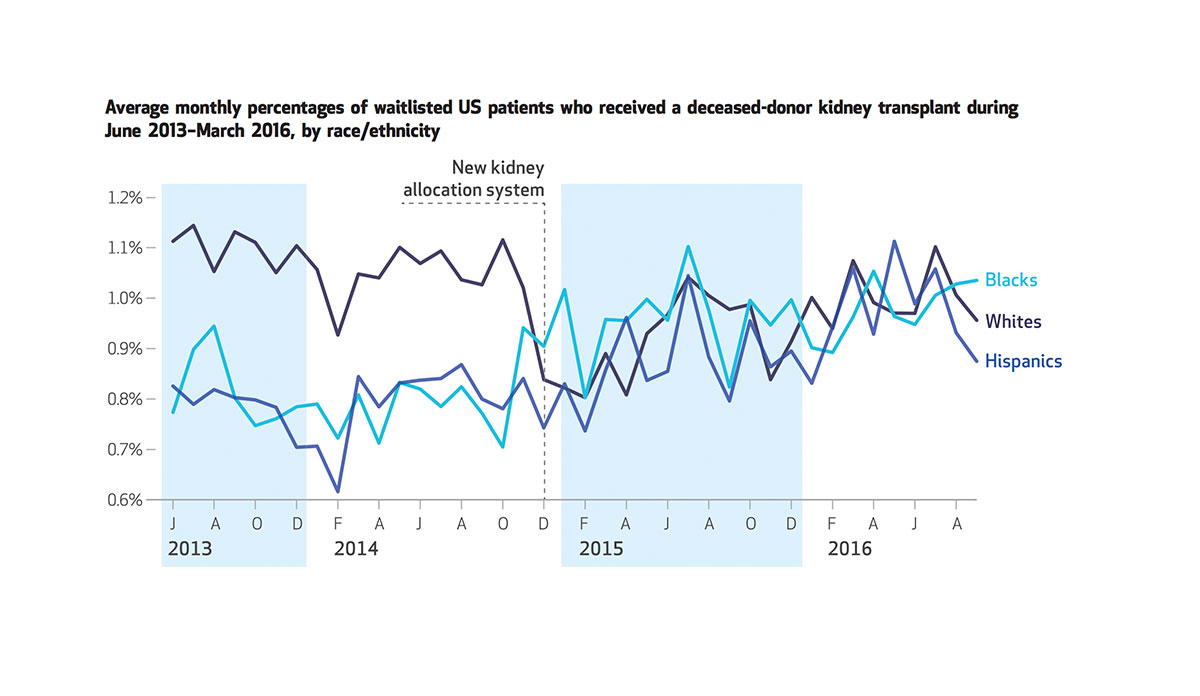Stark disparities exist between the health outcomes of white people and minorities across a wide range of health indicators. One prime example is organ transplant allocation. Prior to 2015, kidney transplants went to white patients at a much higher rate. A new allocation system was devised in order to change that. The simple, yet ingenious solution attacked the structural cause for the inequity. It kept time on the donation list as the main selection criteria, but the fix by the United Network for Organ Sharing (UNOS) acknowledged that because of under-lying healthcare disparities, black and Hispanic people spend more time on dialysis before being put on the list. The new system places the starting point at the earliest date a patient was either put on the list for kidney transplants or started regular dialysis treatments.
Melanson, et al. show in their Health Affairs article that the new UNOS system worked as intended and that the disparities have been largely addressed. This is a huge deal because transplants are the go-to treatment option for those with end-stage renal disease, increasing the likelihood of survival and better quality-of-life, all while costing one-third as much as long-term dialysis. As the authors aptly state: “The new system represents an important step toward achieving equitable access to kidney transplantation, but continued monitoring is crucial to maintaining and improving upon the disparity reductions we observed.”
Databyte via Taylor A. Melanson et al., New Kidney Allocation System Associated With Increased Rates Of Transplants Among Black And Hispanic Patients. Health Affairs.













